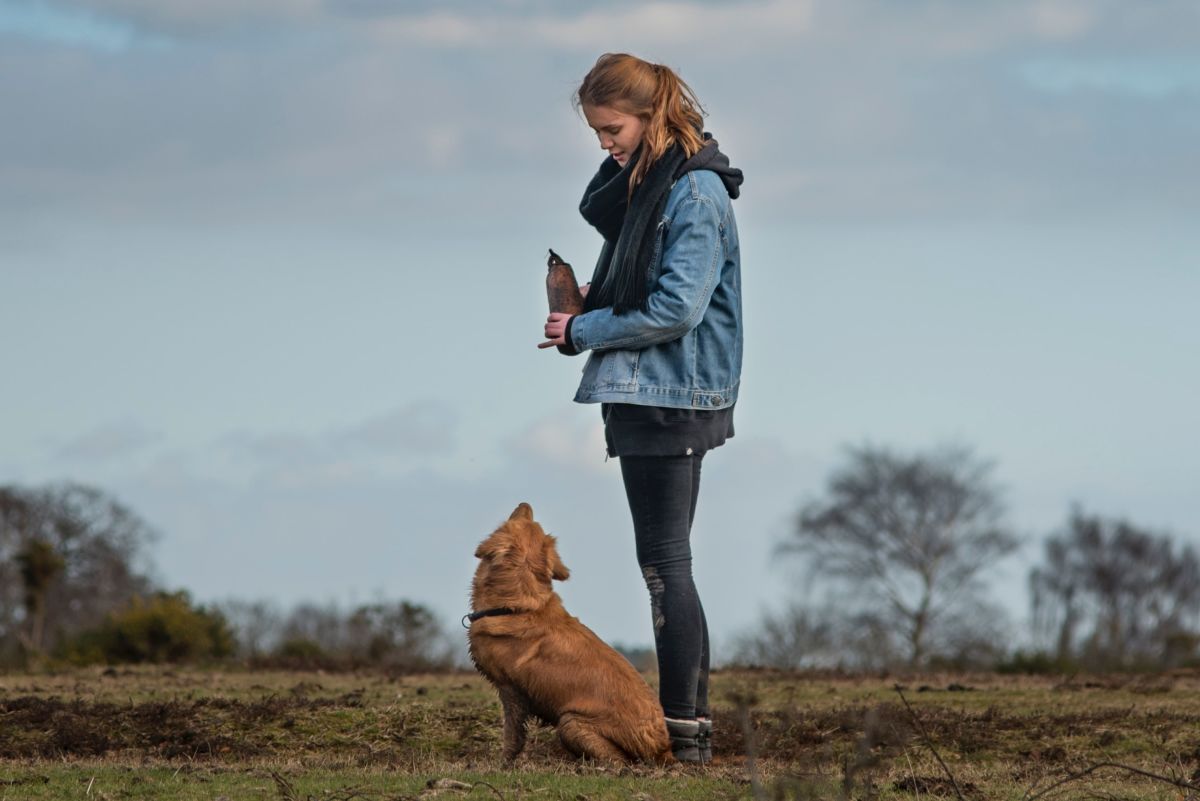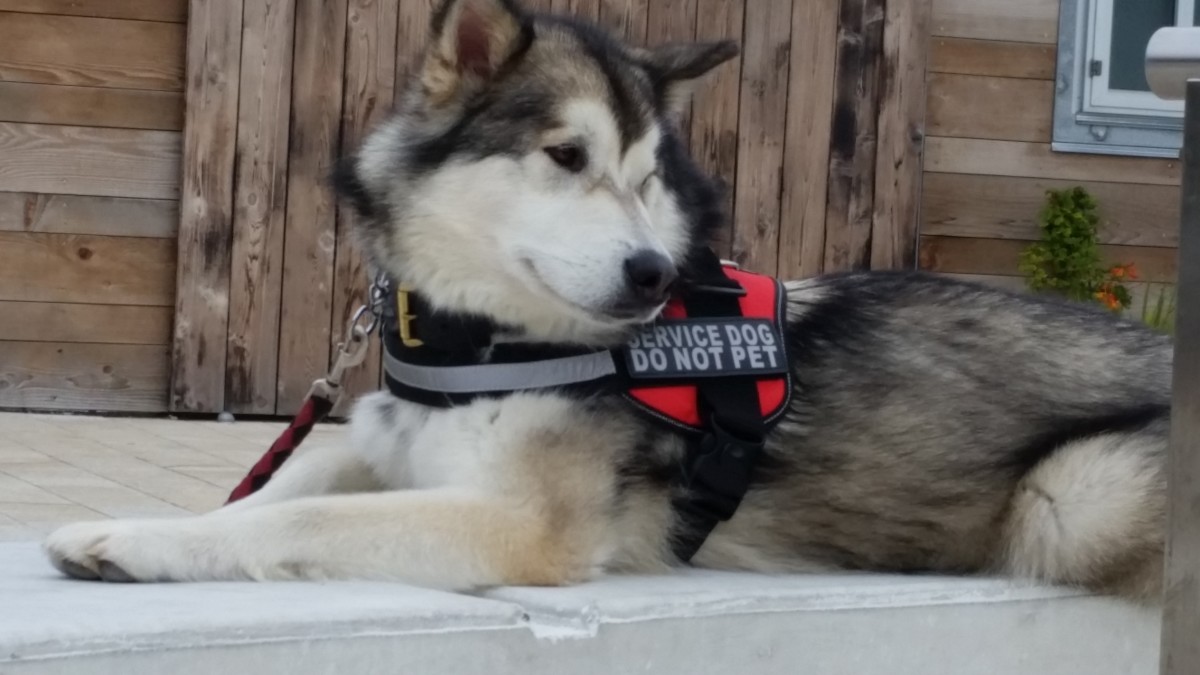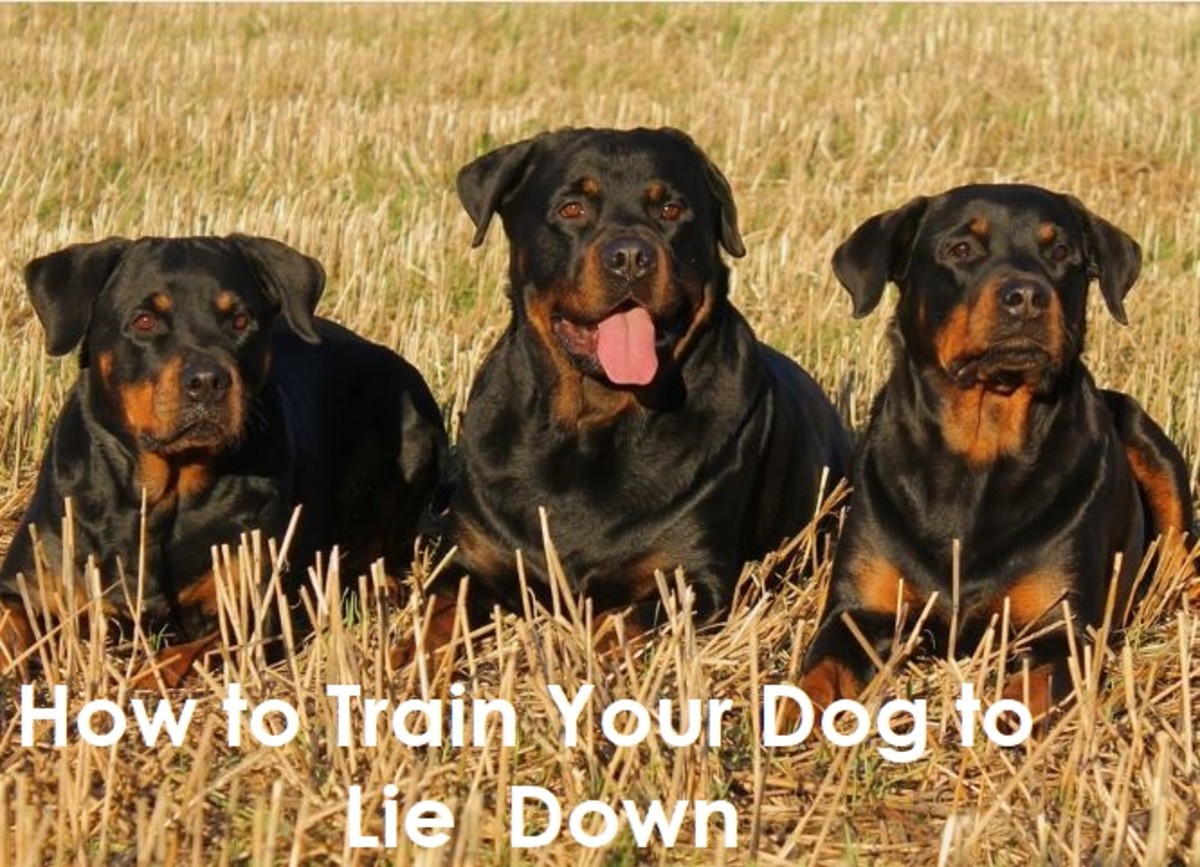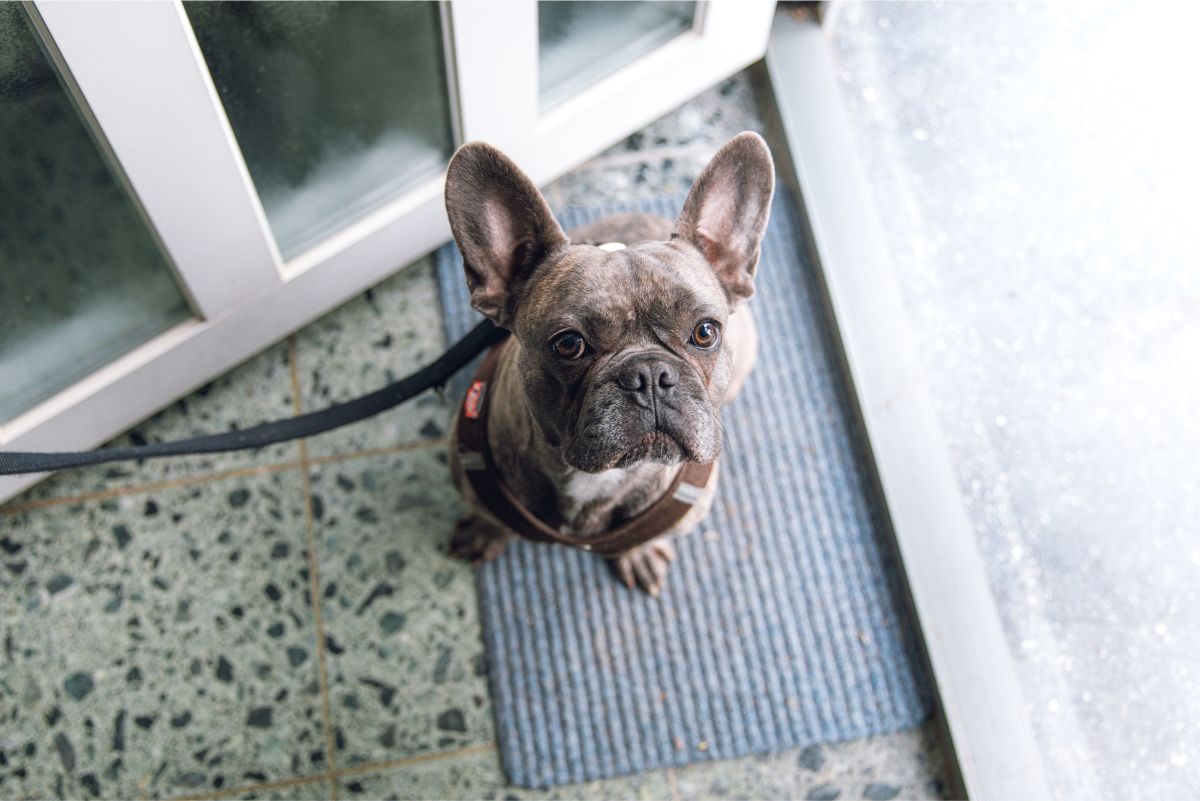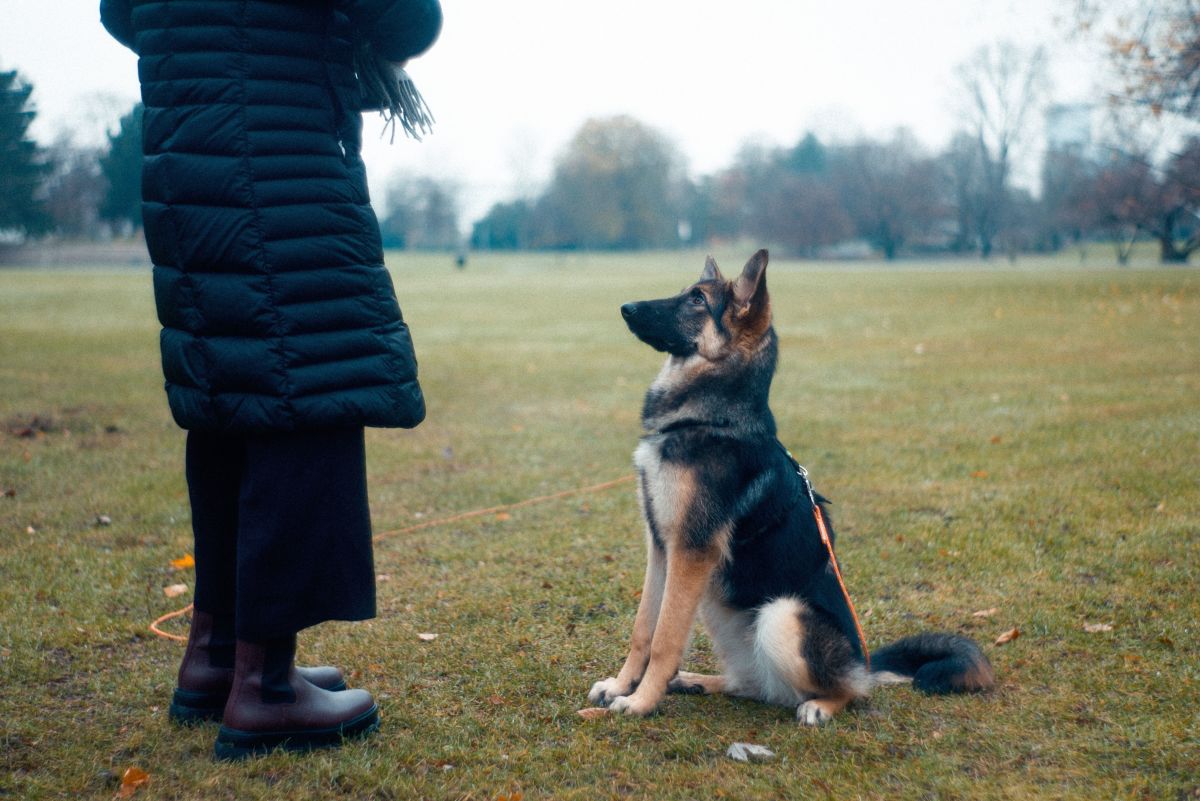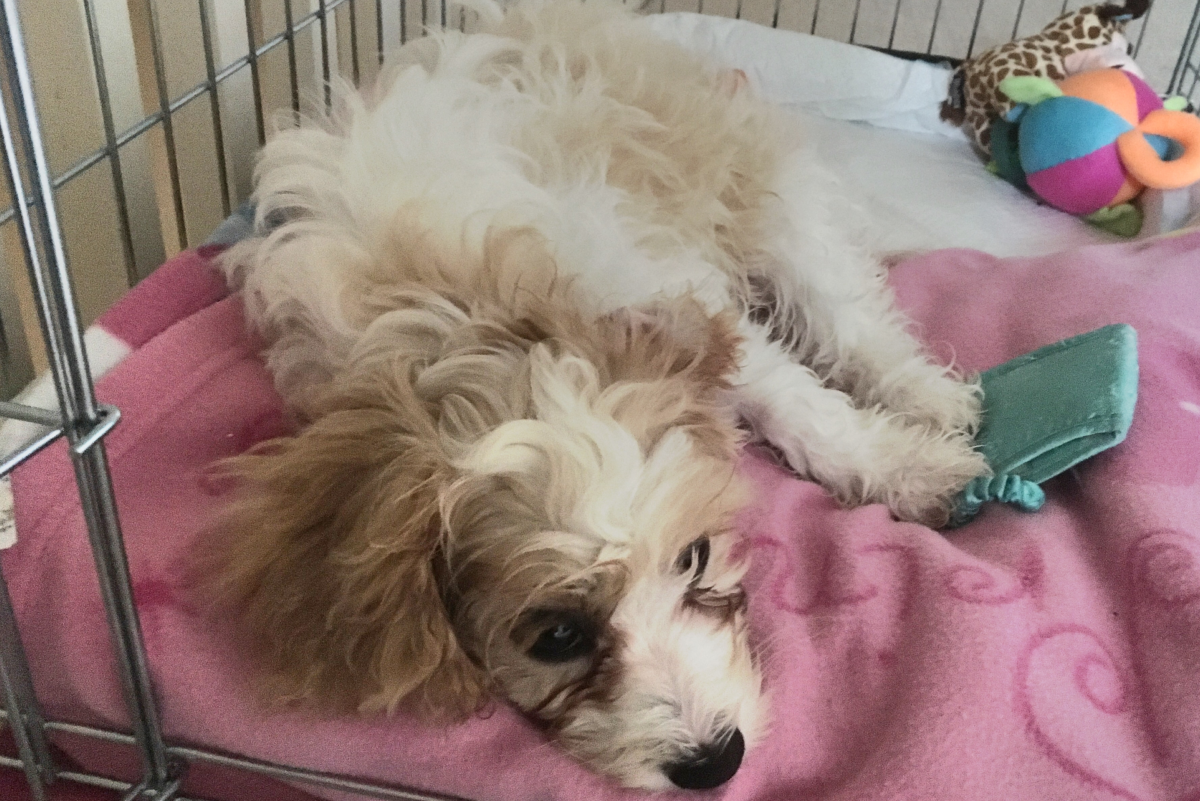How to Teach Dog Commands
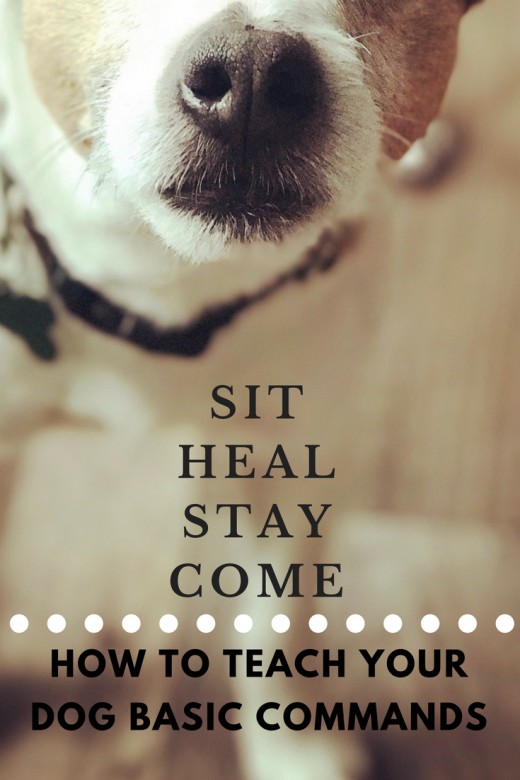
When I was growing up, my parents had this bad habit (that they found completely adorable) of letting our puppy sit nearby while we were eating and beg food off us. It was kinda cute, I guess, until our puppy grew into a dog and in one fell swoop would steal whole sandwiches, pizza slices and cookies out of our hands. They'd created a really chunky, fuzzy, food-guzzling monster who could not be stopped. So when I recently got my first puppy I knew how crucial properly training her would be.
Not because she's an inherently bad dog but because I want to help her be her best self and her best self has a little self control - I mean, true of all of us, AMIRIGHT?!
Besides creating some pretty firm boundaries between the dog and my kids when meals are being served I learned that the quickest way to achieve doggy training success is to conquer basic commands - Sit, heal, stay and come. These commands come in handy at the dog park, when she's playing with the kids and when we're taking walks around the neighborhood and it means we're more comfortable taking our pup on adventures because we know there's a good level of communication between us.
Choosing the Right Reward(s) For Your Dog
The information here is meant to be a guideline for how to train your dog but you can adjust the frequency of training and type of rewards based on what works best for your dog's personality.
The key is to figure out what motivates your dog and what type of reward will keep her interested and engaged in the training. Some key motivators are:
-
Treats - Figure out what treats your dog likes the best.
-
Praise - Some dogs really get pleasure out of making their humans happy.
-
Toys - A favorite toy can be a reward.
-
Games - For instance, knowing that, if they follow direction, you'll throw the ball to play fetch can also be a motivator for some dogs.
First Things First, Learning Their Name
To be clear, I'm all for creative names, but it's important to give your dog a name that's distinctive so that she can recognize it easily. If your dog's actual name is Frederico Romulus Speed-Demon, III, or Anastasia McSmarty-Pants Nebraska Sassafras, maybe just go with Freddy or Ana when talking to your dog.
Using food or whatever motivates your dog, start by just saying her name and immediately giving her a treat. When she starts expecting the treat, wait for your puppy to look at you before giving the reward. Once she has this down, start calling her name from across a room, and each time, she comes for her name, reward her.
The number and length of practice sessions is going to depend on your dog's temperament, but a good place to start is 5-minute sessions a couple times a day. This entire process can take a few weeks or months depending on your puppy's age and attention span.
Steps for Training Your Dog
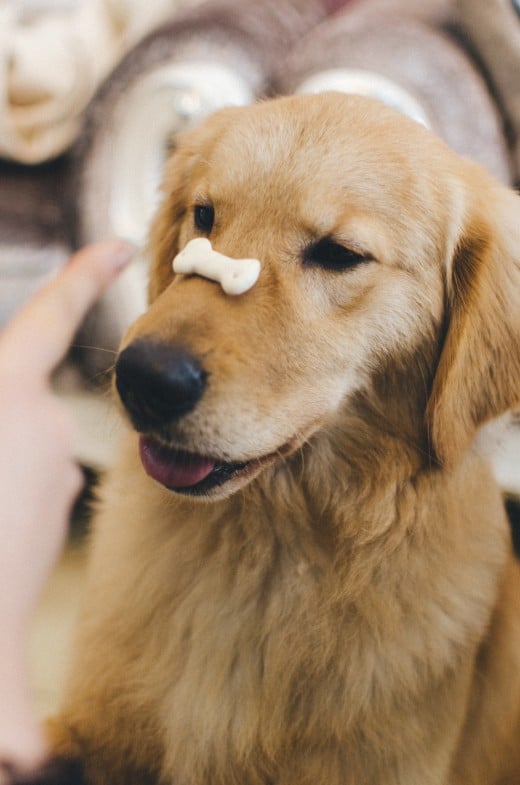
The Essential Commands
The four essential commands that every puppy needs to learn early are:
-
Sit
-
Stay
-
Come
-
Heel
These not only make life easier for you by providing basic communication between you and your dog, but they also will help keep your dog safe. A well-behaved dog who knows even just these basic commands can be called away from dangers like an oncoming car.
Keep in mind that, just because your puppy knows how to sit in your living room, she might not realize she's supposed to do the same thing in the backyard or at the park. Practicing at a variety of locations allows her to eventually internalize the command and perform anywhere.
The techniques I recommend center around reward-based training which basically means we focus on luring dogs into good behaviors with rewards instead of using fear of punishment as a motivator. The basic principle is command-action-reward which is essentially the psychology principle of classical conditioning as described here by Dr. Stanley Coren.
So, using this method, the command is the puppy's name. The action is either looking at you or running to whoever called her name, and the reward is the treat or other motivator.
Overview of Teaching the "Sit" Command
Start with...
| Then,
| Finish with...
|
|---|---|---|
Get your dog's attention by saying her name.
| Entice her with a treat in front of her nose and carefully coax her into a sitting position with your other hand on her neck and say "Sit".
| Lots of praise when her little puppy tush hits the ground (oh, and give her the treat of course!)
|
Teaching "Sit"
The hardest part of this command is getting your dog to realize what you want her to do.
One method that works well is to get your dog's attention, and then hold a treat in front of her nose, slowly raise your hand above and to the back of her head, and in a loud and clear voice, say, "Sit."
With any luck, this should cause her to sit in order to be in a better position to get the treat.
As soon as her rear hits the ground, give her the treat and praise her like crazy. She'll probably get right back up but if not, get her to stand back up by walking away or jumping.
Repeat this process. Eventually, when she gets good at this, start phasing out the hand movement and practice just using the verbal cue. When this becomes second nature, try phasing out some of the treats and just reward her every other time or every third time.
Overview of the "Stay" Command
Start with...
| Then,
| Finish with...
|
|---|---|---|
Sit, which she should already know.
| Hold a hand in front of her face and say "Stay". Aim for her to remain in "stay" for at least five seconds.
| Lots of praise and a treat!
|
Teaching "Stay"
Once your puppy can sit, you can start teaching her to stay.
First, tell your puppy to sit. Then, hold your hand up in front of her face and say, "Stay."
Make sure she knows you're still paying attention to her, and see if she can stay sitting for five seconds. If she makes it, praise her and give her a treat.
Each dog has a different starting point. I was lucky if my golden doodle would sit for 5 seconds. Find out what your dog's starting point is and slowly add time, getting up to a few minutes.
After this, do the same thing but without holding a hand up and start paying attention to something else. You'll probably have to decrease the time again and slowly build back up.
Then, you can have her stay while you walk into another room, eventually calling her to you with her name and rewarding her. Each of these progressions require practice and patience, but it's all essentially the same method. Just keep adding challenges and time until she fully understands the command.
Overview of the "Come" Command
Start with...
| Then,
| Finish with...
|
|---|---|---|
"Stay."
| Walk away. Once you've walked a few feet away say "Come, [Your puppy's name]!"
| A treat as soon as she reaches you.
|
Teaching "Come"
When first learning the 'come' command, having a solid foundation in 'stay' is pretty important.
Have your puppy sit and stay, and walk away. When you call her, add the command 'come' before her name and reward her when she gets to you in order to introduce her to the concept.
The next exercise starts separating this command from the 'stay' command.
Put a long leash on your puppy and then back away quickly and say, "Come!" As you keep backing away, your dog should follow, eventually getting her reward when she reaches you. Repeat this process with a longer leash, starting further apart, and letting your dog wander a little before calling her.
For more practice, you can play hide and seek with your dog inside. Just hide somewhere, even just in a different room, and then call, "Come." When your puppy finds you, make sure to give her a treat. Eventually, you can start lowering the number of times you give the reward. You can also make this more challenging by calling when you know she's paying attention to something else.
Overview of the "Heel" Command
Start with...
| Then,
| Finish with...
|
|---|---|---|
Your leashed puppy on your left side.
| Start walking until she begins to pull you. Say "Heel!" and begin walking her in the opposite direction. So this until she starts to get the hang of walking with you and not dragging you you can...
| a treat!
|
Teaching "Heel"
The final command is 'heel', which allows you to take walks with your dog without her pulling you after each and every squirrel you cross paths with.
Start by putting the leash on your puppy and putting her on your left side. Start walking, and as soon as she starts to get ahead of you, stop walking. When she gets to the end of the leash and starts pulling, say the command, "heel," and turn 180 degrees and start walking the opposite way. This causes your puppy to change directions and catch up with you.
You might spend 20 minutes walking back and forth one block, changing directions every few steps, but eventually, your puppy will figure out that she has to pay attention to you. Once she has the gist of it and only goes ahead by a couple steps, you can keep a treat in your left hand to entice her to stay near you and give her the treat once she has stayed in step with you for a few blocks.
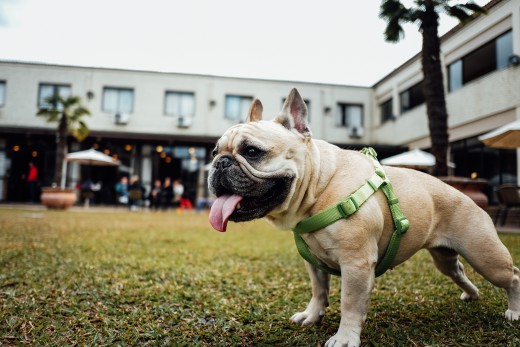
Tips for Helping Your Dog Succeed in Training
-
Start early. A dog can start learning her name as soon as you bring her home.
-
Don't overuse her name though. Just use it when you want to get her attention. Otherwise, she may start tuning it out. Like when my kids say "mom" fifty times in one minute.
-
Practice on a daily basis.
© 2018 Kate Stroud


